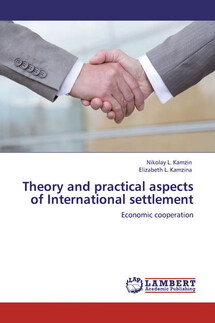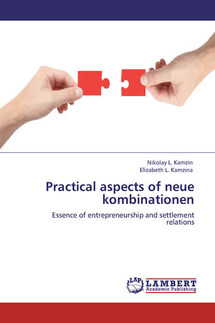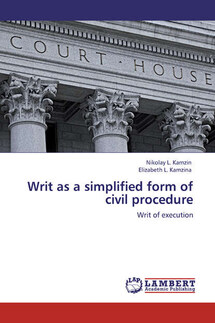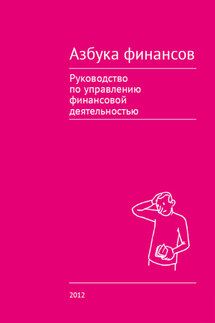Writ as a simplified form of civil procedure. Writ of execution - страница 5
– for contested bills;
– the acts for which you have the mandatory notarial certification or order the commission, subject to compliance;
– the global transactions of any kind committed by judicial order;
– agreements on the amount of content to children and spouse entered into in accordance with the Code of Civil Status;
– on pay-books on wages.
However, beginning development of the institute writ of production in the Soviet civil trial was not as successful as the development of simplified forms of judicial procedure in pre-revolutionary Russia. Following the publication in 1926 of the provisions of Notary Public number of documents on which the writs were issued, declined and later Chapter 24 «On the issue of writs for the acts» were completely excluded from the Code of Civil Procedure of the RSFSR.
The Institute was transferred to the jurisdiction of notaries, which was transformed into Institute executive inscriptions – a notarial act, aimed at giving the executive power, and debt payment documents. This institution exists to this day. The order of the executive commission of the inscriptions is regulated by the Fundamentals of Legislation on Notaries.
Soviet jurists recognized the commonality of the legal nature of the legal institutions of the writ and writ of execution, and noted that notaries in the commission of the inscriptions were guided by the executive regulations for the extradition orders set out earlier in the Code of Civil Procedure.
In the legal literature has raised the question of the causes that led to the transformation of the institute injunction.
Н.Н. Масленникова, notes that the reduction of the practical value of the injunction and its subsequent clotting contributed to «a departure procedure law of Soviet Russia from discretionary, and competition began, the shift to state court procedural activity, the desire for strict regulation of all the really important things in public circulation»[11]. В.И. Решетняк believes that this institution, «focused on the functioning mainly in a market economy», could not be used «in the Russian reality, 30s – 50s of the 20th century, with its totalitarian regimentation of all spheres of civil turnover. Because of this, he had no place in the Code of Civil Procedure in 1964, and he was unreasonably long forgotten domestic legislation»[12].
In the mid-80s. in domestic law clerk appeared analog output. Decree of the Presidium of the Supreme Soviet of the RSFSR of 20 February 1985 «On some changes in the order of recovery of maintenance for minor children»[13] in the judicial practice was introduced by the simplified production of the recovery of maintenance for minor children.
In the legal literature have been formulated following criteria to determine a simplified production of alimony:
– First, the national jurisdiction of a judge alone the next category of civil cases – alimony;
– Second, the child support collected in a simplified manner only for minor children, child support for parents, incapacitated spouse, adult children are collected in the manner of claim;
– Third, the national judge may consider an application for alimony only in the absence of dispute.
This means that if the debtor objects to the collection of alimony, or when he has recovered from the child support for other children, or manufactured holding other writs of execution, the statement of claim must be considered in order. In the absence of consent of the person obliged to pay alimony, the national judge no later than the date of receipt of the application shall notify him of the applications and invites him to a term not exceeding 10 days, if he and the applicant reside in the same town or area and in other cases – in a period not exceeding 20 days, – to indicate their consent to the collection of child support or object to a claim. Upon receiving the consent of the person obliged to pay child support or non-receipt of the due date of his objection to the national judge no later than the date of his ruling for alimony. The case is considered in the claim procedure if the debtor has objected to the recovery of maintenance









